Archaeological excavations at a series of sites in Ninh Binh have helped scientists find many traces of ancient Vietnamese people, many stone tools, pottery fragments, animal and plant bone relics. That has created conditions for scientists, historical and cultural researchers to sketch a vivid picture of archaeology; of the life of prehistoric people in the ancient land of Ninh Binh.
The value of ''non-renewable'' resources
The Bien Son-Tam Diep defense line in Ninh Binh province is the place that bears the heroic mark of King Quang Trung gathering the Tay Son army to march to Thang Long to "wipe out" the invading Qing army. This area currently has many archaeological relics. Among them is Ba Mountain in Bac Son Ward, Tam Diep City, a relic excavated many years ago. Here, scientists discovered under the sediment layer in some caves and on the slopes of Ba Mountain many molars and fossilized animal bones from about 300,000 years ago.
Similarly, at the Man Bac archaeological site in Bach Lien village, Yen Thanh commune, Yen Mo district, through many excavations in 1999, 2001, 2005 and 2007 by the Institute of Archaeology in collaboration with the Ninh Binh Museum and archaeologists, anthropologists, and zoologists from Japan, Australia, and the United States, 105 burials with 107 individuals were discovered. This is the only archaeological site in Ninh Binh and the southern region of the Red River Delta, where many burials and architectural relics, quadrilateral axes, grinding tables, bark pounding tables, jewelry, pottery; and many relics of animals, plants, and shells of saltwater and freshwater mollusks were discovered.
Subsequent archaeological excavations at a series of relics such as Sao Cave Mountain, Nhanh Cave, Monkey Cave, Yen Ngua Cave, Thung Lang in Tam Diep City; or But Cave, Thach Binh Cave, Cuc Phuong Forest in Nho Quan District and a number of other caves and rock shelters in Gia Vien District... with the relics and traces discovered and preliminary research have also given us a sketch of the life of prehistoric people in Ninh Binh.
Recently, at the workshop on “Ninh Binh in the process of national history and the cause of innovation”, Associate Professor, Dr. Tran Duc Cuong, Chairman of the Vietnam Historical Science Association affirmed: “Some archaeological relics of the Paleolithic era found in Tam Diep date back about 300,000 years. Also in the above mentioned area, scientists continued to find traces of the Hoa Binh culture dating back about 30,000 years. And many traces clearly show that the coastal plain of Ninh Binh was the settlement of ancient Vietnamese people in the Neolithic era. Typically, the Dong Vuon and Man Bac relic areas in Yen Mo district”.
Intersecting in the Red River Delta and Ma River Delta, Ninh Binh has a long history accumulated through the struggles against foreign invaders; it is the birthplace of three dynasties: Dinh, Tien Le and the beginning of Ly Dynasty. When establishing the first centralized feudal state in Vietnam (Dai Co Viet State), King Dinh Tien Hoang chose Hoa Lu as the capital. Currently, there are many opinions that Hoa Lu capital is a stone capital; others affirm that it is a water capital because it is surrounded by rivers on three sides. Since the 60s and 70s of the last century, functional units, archaeologists, historical and cultural researchers have conducted many archaeological excavations in Hoa Lu capital. They found underground many traces of foundations and walls that were quite solidly built.
In which, the brick material is printed with the words "Dai Viet Quoc Quan Thanh Chuyen" (meaning bricks to build the citadel of Dai Viet). In recent years, the archaeological excavations "Research on the history of Ninh Binh land from the Boi River junction to Hoa Lu Capital, early AD, to the period of Dai Co Viet State" conducted by the Ninh Binh Department of Culture and Sports in coordination with the Institute of Archaeology, Institute of History, Hanoi University of Culture, have discovered about 30 more archaeological sites with traces of prehistoric human habitation.
In particular, the archaeological fieldwork expanded over an area of 600 m2 in the field area south of the temple of King Le Dai Hanh in the ancient capital of Hoa Lu in 2021, initially identifying the foundation of the palaces of the Dinh and Tien Le dynasties with a fairly large scale as recorded in historical books: "Co Viet country under Tong Khai Bao/Hoa Lu capital of Han Truong An". That contributed to raising awareness of the outstanding historical and cultural values of non-renewable resources in the land of "spiritual land and talented people" Ninh Binh.
Promoting archaeological value
Head of the Department of Cultural Heritage Management (Department of Culture and Sports of Ninh Binh) Vu Thanh Lich said: Ninh Binh currently has 68 archaeological sites discovered in the past time, which can provide important scientific data on the process of formation and development of nature and society from prehistoric times, tens of thousands of years ago, to recent revolutionary historical periods. The Man Bac archaeological site in Yen Mo district has been continuously excavated, contributing more research materials on the appearance of life and material of the Man Bac residents in particular and the ancient Vietnamese people in the pre-Dong Son period; on climate change, geomorphology, and geology in the Red River Delta and the coastal areas of the North. The results of archaeological excavations at the Trang An Scenic Landscape Complex, lasting 8 years with the coordination of many experts, historical and cultural researchers in the country and the world, have also discovered 30 archaeological sites with traces of prehistoric people.
The geomorphological and geological values meet the conditions for Trang An to be recognized as the first dual heritage in Vietnam and Southeast Asia, creating opportunities for Ninh Binh to develop rich and diverse tourism products, becoming a safe, friendly and attractive destination for domestic and international tourists. However, each type of relic and heritage is strongly affected by nature, causing degradation and damage; or being destroyed due to the pressure of tourism development, rapid urbanization and lack of awareness among some people, making the work of preserving and promoting archaeological values face many difficulties and challenges.
Dr. Nguyen Anh Thu (Hanoi University of Culture) when researching solutions to preserve and promote the value of archaeological relics said: "The system of archaeological relics in Ninh Binh discovered, excavated and researched over the past decades, is the link connecting the history and cultural source of Ninh Binh, from Hoa Binh culture to Dong Son culture and later historical periods.
That helps Ninh Binh become an important location on the map of archaeological relics distribution in Vietnam. However, the research, conservation and promotion of the value of archaeological relic resources is the task of state management agencies, scientific researchers; it is the responsibility of the community where the relics are located and the issue of communication. In fact, most archaeological relics in Ninh Binh have not fully promoted their historical, cultural values and economic benefits to serve the socio-economic development of the locality.
To preserve and promote the value of archaeological relics sustainably, Ninh Binh needs to conduct a comprehensive survey and correctly assess the above-mentioned resource reserves; at the same time, promptly prevent factors affecting the current status and future of the relics. The development of a plan to preserve and promote the value of archaeological relics needs to be based on the cooperation and consensus of the implementing and implementing units, the archaeological units, the community, and the media.
Currently, Ninh Binh is implementing many activities to celebrate the 200th anniversary of its title and the 30th anniversary of its re-establishment, including a scientific conference on the historical process and the province's innovation since its re-establishment (April 1, 1992). Many scientists and cultural history researchers believe that Ninh Binh was once a golden imperial capital in history, going through changes and ups and downs, the title of an ancient capital will forever resonate with domestic and international friends when it does a good job of preserving and promoting the outstanding values of "non-renewable" resources such as archaeological relics. Those resources will create unique products to serve the development of tourism into a key economic sector; creating more resources to promote investment attraction for sustainable socio-economic development of the province.
Source: https://nhandan.vn/am-vang-mot-vung-non-nuoc-co-do-post690742.html




![[Photo] Prime Minister Pham Minh Chinh chairs the Government's special meeting on law-making in May](https://vphoto.vietnam.vn/thumb/1200x675/vietnam/resource/IMAGE/2025/5/22/1c880aae96fd4e0894abc47a46fe19ba)

![[Photo] General Secretary To Lam chairs a working session with the Central Internal Affairs Commission](https://vphoto.vietnam.vn/thumb/1200x675/vietnam/resource/IMAGE/2025/5/22/3b7790f499da45b2803d8ae253207ef1)

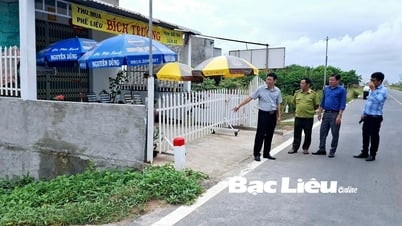


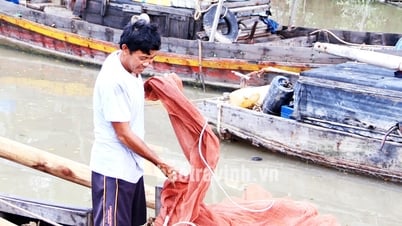
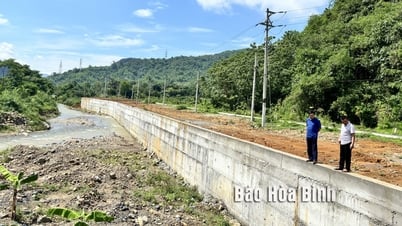










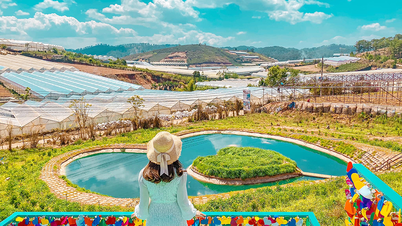
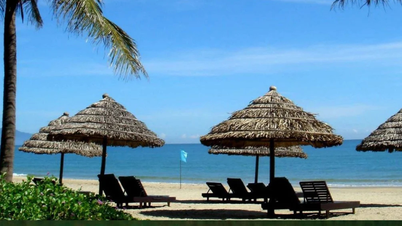












































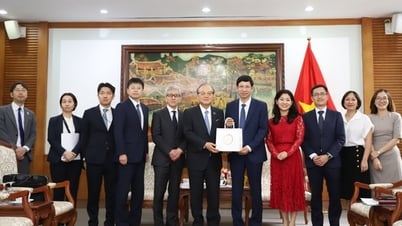


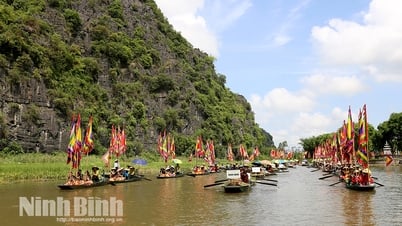

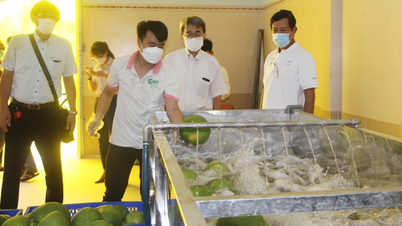

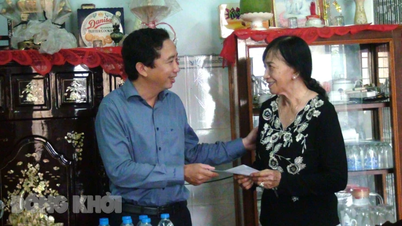






![[Podcast] Week introducing more than 500 OCOP products in Hanoi](https://vphoto.vietnam.vn/thumb/402x226/vietnam/resource/IMAGE/2025/5/22/d144aac2416744718388dbae3260e7fd)






Comment (0)